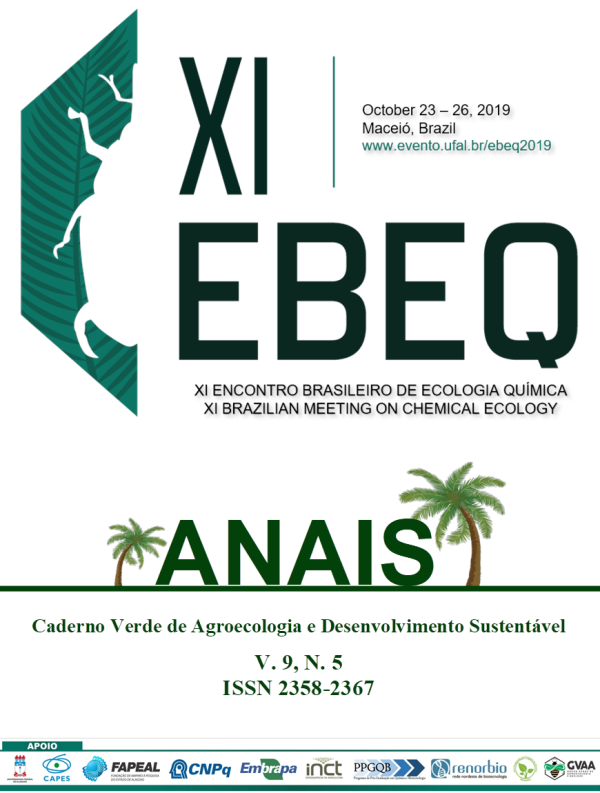EVALUATION OF PHEROMONE AND LIGHT TRAPS FOR THE CITRUS BORER DIPLOSCHEMA ROTUNDICOLLE (COLEOPTERA: CERAMBYCIDAE)
Palavras-chave:
CITRUS BORER, CERAMBYCIDAE, CERAMBYCINAE, 3-HYDROXYHEXAN-2-ONEResumo
The citrus borer, Diploschema rotundicolle (Coleoptera: Cerambycidae), is a longhorn beetle native to South America and regarded as a serious citrus pest in Uruguay. High infestation levels cause an overall deterioration of the tree structure, resulting in important yield reduction. Currently, the only available management strategy is cultural control by trimming off infested branches, which is expensive in labor costs and mostly inefficient. Our work aims at the development of an effective trapping system that could eventually be used for management strategies of this pest. Our work on the chemical communication system of D. rotundicolle has shown that males produce large amounts of (3R)-3-hydroxy-2-hexanone and some minor compounds, including 2,3-hexanediol and 2,3-hexanedione. This a nocturnal beetle, and preliminary work has shown attraction to light traps. In this study, a field trail was carried on to test the pheromone and light stimulus in combination, using cross-vane traps in a citrus grove, during the summer of 2018/19. Tested attractants included the racemic hydroxyketone, racemic hydroxyketone plus hexanediol, led light, led light plus the two pheromone compounds, and isopropanol as control. The results show a clear effect of light and only a tendency for higher catches in light traps with pheromone than in light traps alone, suggesting that light and chemical stimuli might be used in combination but a better chemical stimulus is needed to enhance field trapping for management purposes.Downloads
Publicado
Como Citar
Edição
Seção
Licença
Termo de cessão de direitos autorias
Esta é uma revista de acesso livre, em que, utiliza o termo de cessão seguindo a lei nº 9.610/1998, que altera, atualiza e consolida a legislação sobre direitos autorais no Brasil.
O(s) autor(es) doravante designado(s) CEDENTE, por meio desta, publica a OBRA no Caderno Verde de Agroecologia e Desenvolvimento Sustentável, representada pelo Grupo Verde de Agroecologia e Abelhas (GVAA), estabelecida na Rua Vicente Alves da Silva, 101, Bairro Petrópolis, Cidade de Pombal, Paraíba, Brasil. Caixa Postal 54 CEP 58840-000 doravante designada CESSIONÁRIA, nas condições descritas a seguir:
O CEDENTE declara que é (são) autor(es) e titular(es) da propriedade dos direitos autorais da OBRA submetida.
O CEDENTE declara que a OBRA não infringe direitos autorais e/ou outros direitos de propriedade de terceiros, que a divulgação de imagens (caso as mesmas existam) foi autorizada e que assume integral responsabilidade moral e/ou patrimonial, pelo seu conteúdo, perante terceiros.
O CEDENTE mantêm os direitos autorais e concedem à revista o direito de divulgação da OBRA, com o trabalho simultaneamente licenciado sob a Licença Creative Commons do tipo atribuição CC-BY.
O CEDENTE têm autorização para distribuição não-exclusiva da versão do trabalho publicada nesta revista.
O CEDENTE têm permissão e são estimulados a publicar e distribuir seu trabalho online (ex.: em repositórios institucionais ou na sua página pessoal) a qualquer ponto antes ou durante o processo editorial, já que isso pode gerar alterações produtivas, bem como aumentar o impacto e a citação do trabalho publicado.










